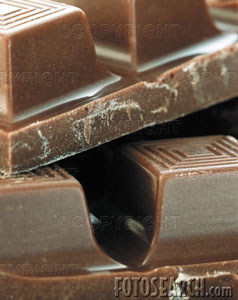There are two types of cocoa powder: natural (non-alkalized) and Dutch process (alkalized). Dutch-process cocoa has been treated with a chemical, such as potassium carbonate, to reduce the natural acidity of the cocoa beans. The process, called Dutching, softens the sharpness and fruitiness of the cocoa flavor and develops flavors that are toasty, espresso-like or sometimes even tea-like. Dutching also darkens the cocoa to an appetizing rich, deep reddish-brown color; extreme Dutching results in the distinctively flavored charcoal-black cocoa used to make Oreo cookies. Dutch-process cocoa may or may not be labeled as such, but "cocoa processed with alkali" should appear on the ingredient statement. Natural cocoa is typically labeled "cocoa."

Fat content
Generally, higher fat content improves the flavor and quality of cocoa. Natural cocoas contain 10 to 12 percent fat, although superior-quality, high-fat natural cocoa is available with 22 to 24 percent fat. Dutch-process cocoa usually contains 15 to 24 percent fat. There is no need to alter recipes to accommodate different amounts of fat in cocoas.
Flavor differences
Some cooks appreciate the unique mellow flavor of Dutch-process cocoa, while others prefer the sharper, fruitier flavor of natural cocoa. In most recipes, the two types are interchangeable. However, if a recipe contains leavenings (baking soda or baking powder), stick to the cocoa type that is specified. If there is no specific recommendation and the leavening is baking soda, use natural cocoa. In cake recipes containing leavenings, the wrong cocoa may result in a dense center streak of batter that does not rise; it can also produce a dark charcoal color with a pudding-like texture and soapy flavor.
Cocoa classification



